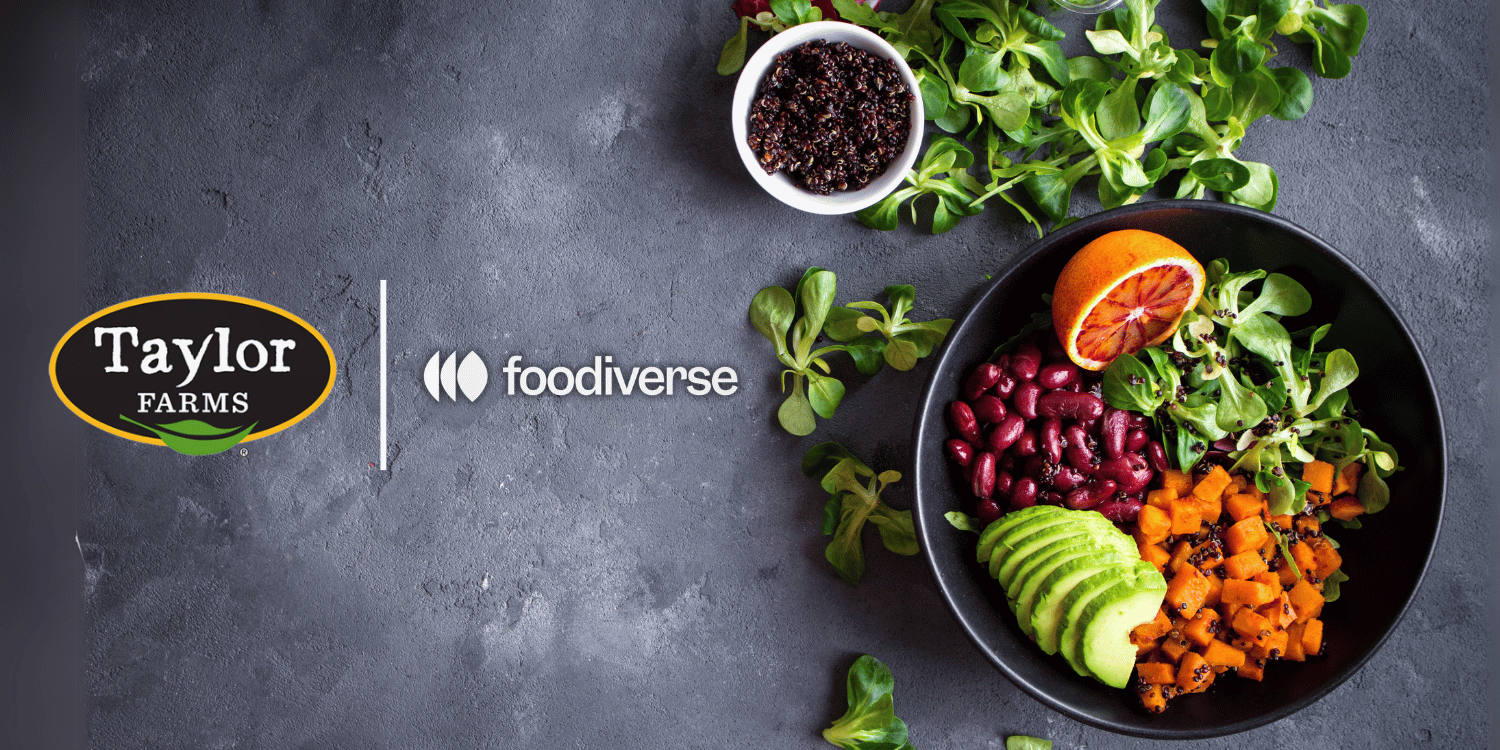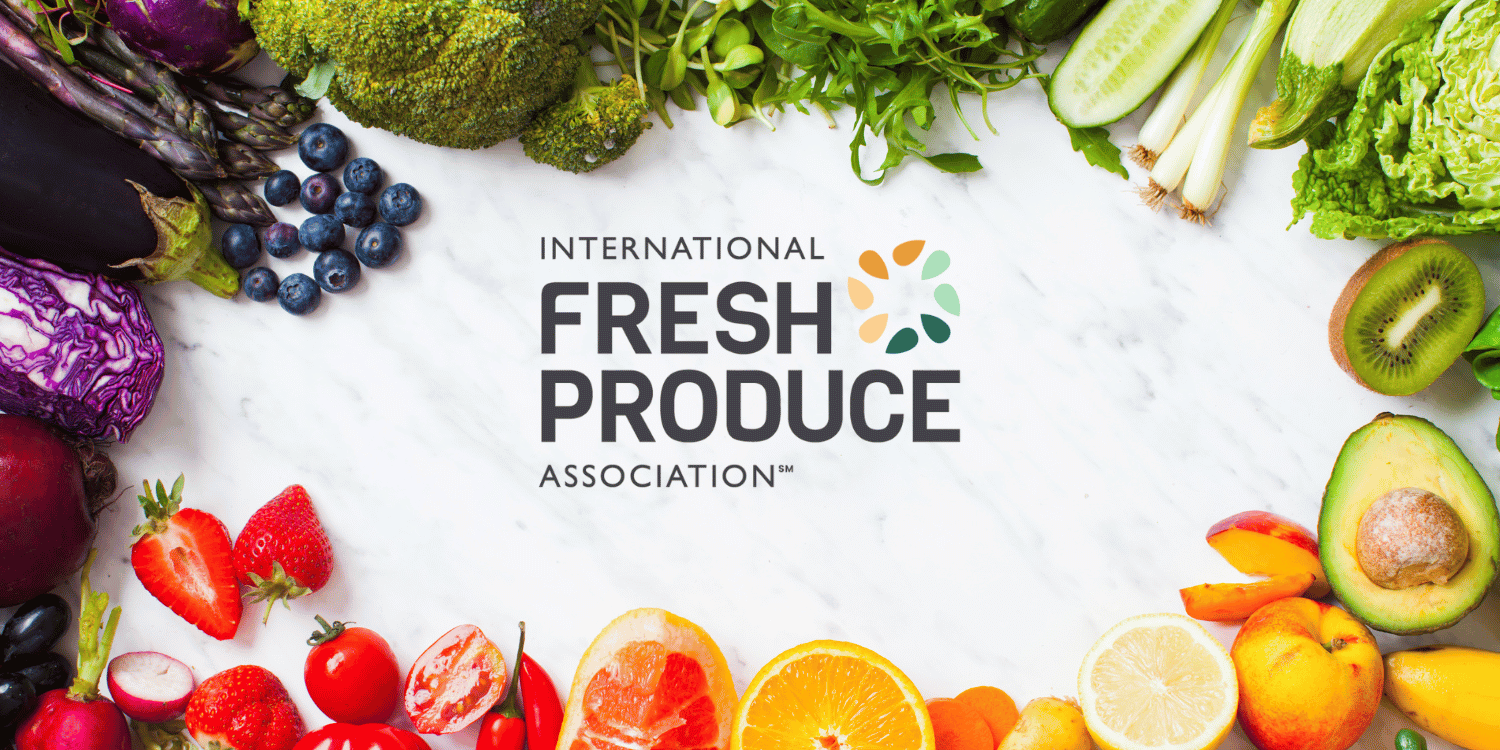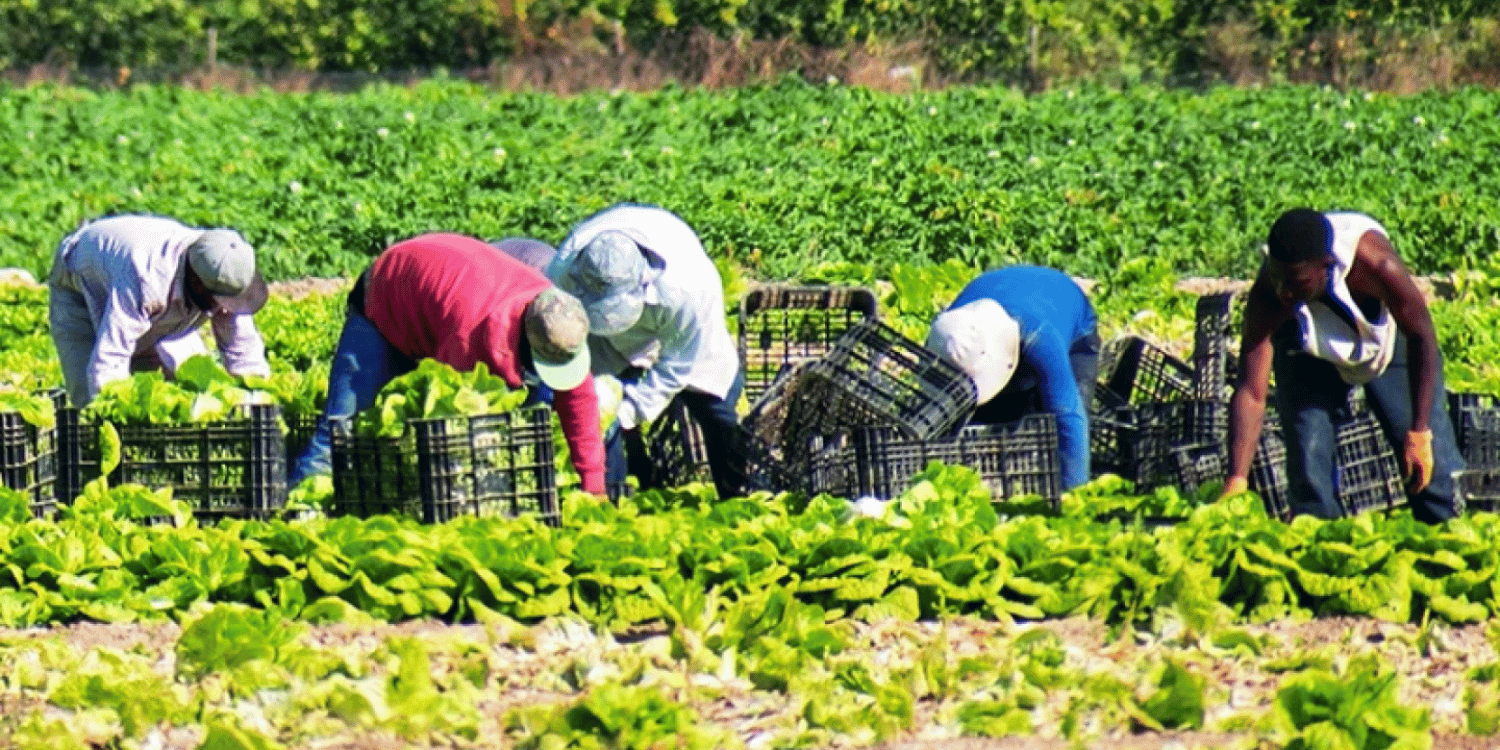Firstly, conduct thorough market research to understand the needs of the retail buyers, including the price, quantity, and quality of produce they require.
Secondly, tailor your presentation to these needs, emphasizing the unique selling points of your fresh produce.
Thirdly, establish relationships with the buyers, as strong relationships based on trust and reliability can greatly boost your prospect of future sales.
Fourthly, provide them with samples of your product for quality examination, accompanied by professionally prepared documents which detail your product specifications, price, and supply capabilities.
Fifthly, stay open to negotiations regarding prices, quantities, and delivery schedules while maintaining your bottom-line requirements.
Lastly, follow up with the buyers a few days after your presentation to reiterate your interest in supplying your fresh produce to them and to collect feedback for improvement.
- Understanding market research for effective produce sales is crucial.
- Presentation should be tailored according to the interest of retail buyers.
- Building solid relationships with buyers can facilitate sales progress.
- Product samples play an essential role in convincing buyers.
- Professionally prepared documents can greatly improve negotiation outcomes.
Still, there’s an array of topics that we are set to discuss in the upcoming sections which will provide you with more depth and a wider lens into the subject of approaching retail buyers. Insights such as trade policies, negotiating techniques, payment standards, and effective ways to manage buyer relationships, will be elaborated upon. Notably, these areas not only reinforce the key takeaways discussed above but also add layers of understanding on how best to navigate your fresh produce business in the retail market.
I encourage you to keep reading to enhance your knowledge and add value to your professional endeavours. This is the kind of information that won’t just help you approach retail buyers, but build a more sound and sustainable business model in the long term.
Contents
- Defining Market Research in Produce Sales
- Importance of Tailoring your Presentation
- Building Relationships with Retail Buyers
- Why Offer Product Samples?
- Importance of Professionally Prepared Documents
- Navigating Negotiations in Produce Sales
- Maintaining Bottom-Line During Negotiations
- Following Up after Presentations: Why?
- Importance of Feedback in Sales Success
- The Bottom Line
Defining Market Research in Produce Sales
In Short: Market research in produce sales involves gathering and analyzing information about the market, including trends, competition, and customer preferences. It’s fundamental for finding retail buyers, forming profitable partnerships, pricing produce appropriately, and increasing customer satisfaction.
Let’s start with the basics, what exactly is market research in produce sales? Well, simply put, it’s a systematic process of gathering, analyzing and interpreting information about a specific market.
This information includes details about the target customers in that market. It also encompasses the trends, competition and the macroeconomic conditions like, weather patterns or government regulations. This information helps you to understand your current and potential customers. Thus, you’re in a better position to meet their needs.
Do you know what it takes to carry out effective market research? Let’s dive into its three core elements:
- Understanding your customer base.
- Analyzing current industry trends.
- Identifying and studying your competition.
The crucial question is, why should you bother carrying out market research for your produce? Market research plays a significant role in finding retail buyers for your produce. It aids in the identification of potential retail partnerships. These partnerships could lead to profitable sales channels for your produce.
Is the purpose of market research only to find buyers? You may be surprised, but the benefits of market research extend far beyond that. It also helps in pricing your produce appropriately. It provides insight into what other competitors are charging. Then, you can make a competitive, yet profitable pricing strategy.
Did you know market research is useful for increasing customer satisfaction? By bringing invaluable customer insights to light, it allows you to put the customer first. You’re able to align your produce offerings with customers preferences.
Now, consider the specific market research techniques you can utilise. Have you thought about commissioned market reports? They can give an accurate overview of the market landscape. Or perhaps surveys and interviews. They provide direct feedback from existing and potential customers.
Is leveraging social media and the internet part of your strategy? In this digital age, online channels like social media have massive potential for market research. They provide a wealth of data about produce preferences and consumption habits. This data can highlight emerging trends and customer needs.
Pro Tip: To effectively conduct market research in produce sales, focus on understanding your customer base, analyzing current industry trends, and identifying your competition.
All that market research can seem intimidating, can’t it? But remember, market research doesn’t need to be overly complicated. It should instead reflect the specific needs of your produce business.
Let me tell you, dating back to our original enquiry, how important is market research in finding retail buyers? It’s fundamental. It forms the backbone of your go-to-market strategy. It ensures you get to your right audience. And ideally, it paves the way for business growth and customer satisfaction.
Importance of Tailoring your Presentation
In Short: Tailoring your presentation to retail buyers is essential as it shows an understanding of their unique needs and challenges which can build trust and confidence. This tailored approach, highlighted by research, focusing on benefits, and being both professional and relatable, transforms your produce from just another product into a targeted solution, fostering a more productive, long-term relationship.
Approaching retail buyers is an art, and like in all art forms, presentation matters a lot. How you present your fresh produce can mean the difference between a sale and a miss.
But we’re not just talking about the physical presentation of your product. Sure, you must ensure your fresh produce looks appealing. But what’s even more crucial is how you present your business proposition to the retail buyer.
Let me tell you, why is tailoring your presentation so important? The short answer is: because every retail buyer is different. They may all be in the retail business, selling similar products to their customers, but how each retail buyer operates, and consequently, what they look for in suppliers, can vary greatly.
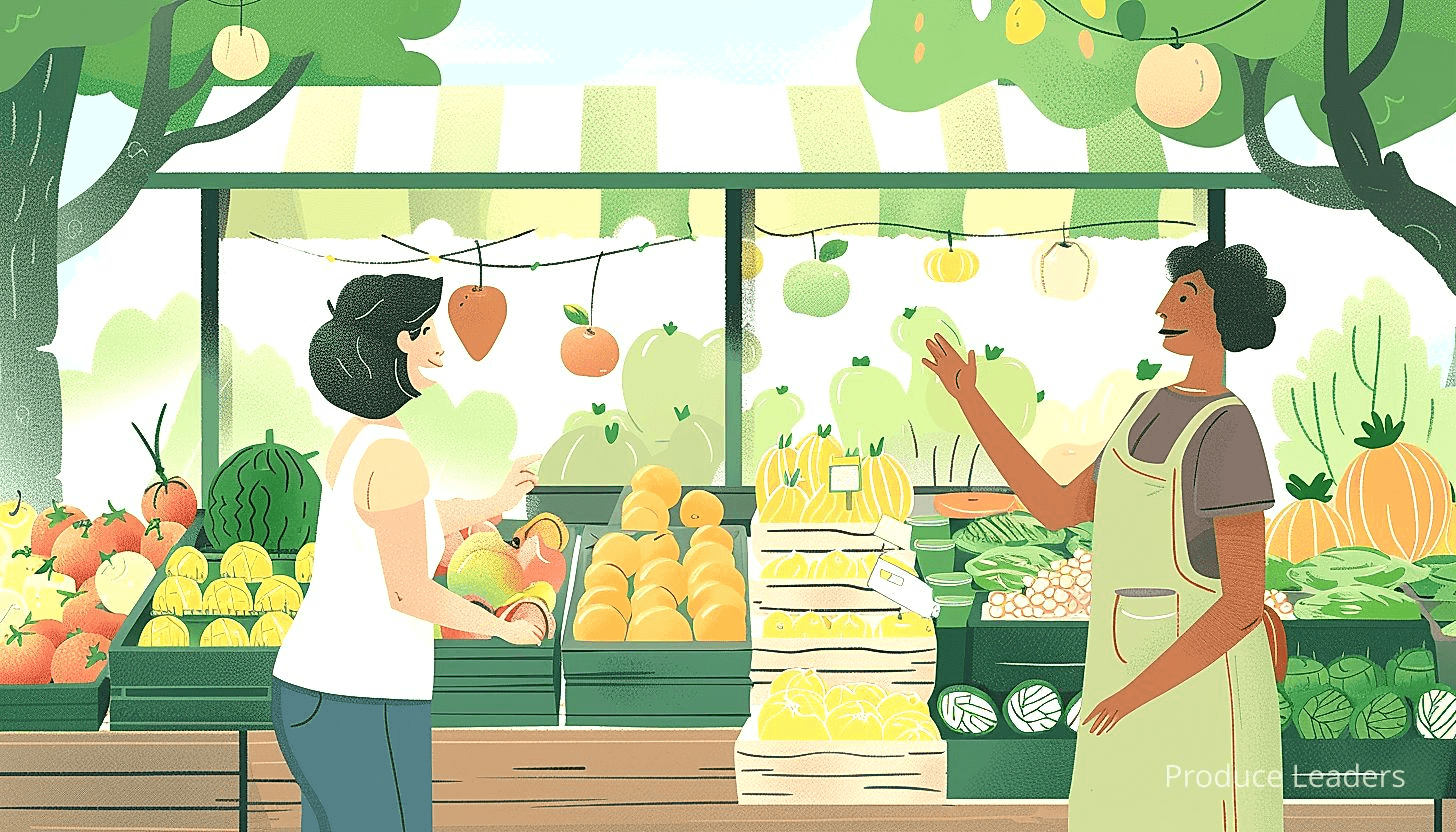
For instance, some retail buyers might focus more on price. Others might value consistent delivery schedules. Then there are those who prioritize a supplier’s sustainability practices. The list goes on. Whatever is important to a particular retail buyer should inform and shape your presentation.
Now we understand why tailored presentations are crucial. But, how do we go about tailoring our presentations, exactly?
Here are some tips to guide you:
- Research the retail buyer. Find out as much as possible about the retail buyer and their business. What kind of fresh produce do they sell? What are their values and priorities? What do their customers care about? This information will help inform your presentation.
- Focus on benefits, not features. Retail buyers want to know how your fresh produce will benefit their business. This is far more persuasive than merely listing the features of your produce.
- Be professional yet relatable. Your presentation should not be a dreary monologue of facts. Inject some personality into it! Tell engaging stories about your fresh produce or your business that align with the retail buyer’s values.
Let me tell you, have you noticed something in common among these tips? They all require an understanding of the retail buyer. This is your golden rule: know your retail buyer. Understanding their needs, wants, and priorities is fundamentally important in tailoring your presentation to them.
Let’s be clear: tailoring your presentation will require more work than a generic sales pitch. But it’s well worth the extra effort. In the end, what you’re aiming for is not just a successful sales pitch, but a productive, long-term relationship.
Can you imagine the level of trust and confidence a retail buyer would have in you if you demonstrate that you understand their unique needs and challenges?
And that’s just the start. When your presentation is tailored to the retail buyer, your fresh produce isn’t just another product on a shelf. Rather, it becomes a solution to their unique needs and challenges.
Wouldn’t you agree that this is a much stronger selling point? Tailoring your presentation might sound tedious, but when done right, the benefits are immense.
Building Relationships with Retail Buyers
In Short: Building strong, professional relationships with retail buyers can increase shelf space for your produce, boost negotiating power and lead to special promotions. Maintaining consistent, respectful communication, demonstrating understanding of their business, and providing a regular supply of high-quality produce are vital steps to nurture this relationship.
Developing a strong relationship is key when dealing with retail buyers for your fresh produce. Your approach should equally balance professionalism and familiarity.
Always remember that your relationship with retail buyers is a business one, as it needs to be mutually advantageous. Unlike a friendship, the objective is to nurture a profitable working relationship.
But, how do you go about it? Establishing a reliable and trusted relationship with store owners could increase the odds of your produce continuously occupying space on their shelves.
Keep in mind that the way you present yourself can set the tone of the business relationship. This is crucial for the initial meeting with the retail buyer.
Research about the store, the type of customers they serve, and the other products they already sell. Through demonstrating an understanding of their business, you can show them how your fresh produce can add value to their store.
It is extremely important to maintain a professional image. Whether the topic is about product prices, delivery, or quality, your conversations must remain courteous and respectful.
Never underestimate the power of communication. Would you value a business partner who is difficult to communicate with? Regular, consistent, and clear communication to keep the buyer informed can help build a strong relationship.
As your relationship grows, informal communication such as meeting for lunch, a phone call on weekends, or even some friendly chit-chat can strengthen your business relationship. Just ensure that the boundary between personal and professional life is maintained.
Now, here are few advantages a solid relationship with retail buyers can bring:
- More shelf space for your fresh produce
- A better negotiating power when discussing price
- Consideration for special promotions
Providing a consistent supply of high-quality, fresh produce is a great way to build trust. No retailer would appreciate having an empty space on their shelves because their supplier let them down.
Finally, don’t forget to appreciate your retail buyer. A little appreciation can go a long way in building a stronger relationship.
Important: Developing a strong relationship with retail buyers is key, striking a balance between professionalism and familiarity, with consistent and clear communication, a consistent supply of high-quality fresh produce, and genuine appreciation which can lead to increased shelf space for your products, stronger negotiating power, and consideration for special promotions.
This could be as simple as thanking them for their business, making a helpful suggestion, or addressing any concerns they might have. Just be genuine and express your appreciation sincerely.
Building relationships with retail buyers might seem quite a task, isn’t it? But remember, the benefits of a strong business relationship make it worth the effort.
Why Offer Product Samples?
In Short: Offering product samples provides tangible proof of the quality of your product and helps initiate a trustworthy business relationship with retail buyers. Sample distribution reduces perceived risk, provides tangible evidence, triggers reciprocity, and showcases your business’s reputation, values, and reliability.
Let’s consider why you’d want to put effort into creating product samples. One of the primary reasons is because samples provide tangible proof of the quality of your product.
As a supplier of fresh produce, you know the excellency of your produce. Yet, how do you communicate this to retail buyers? You let your product speak for itself.
Samples give buyers a clear idea of what they’re investing in. As the old adage goes, seeing is believing, isn’t it? But when it comes to fresh food, tasting is believing.
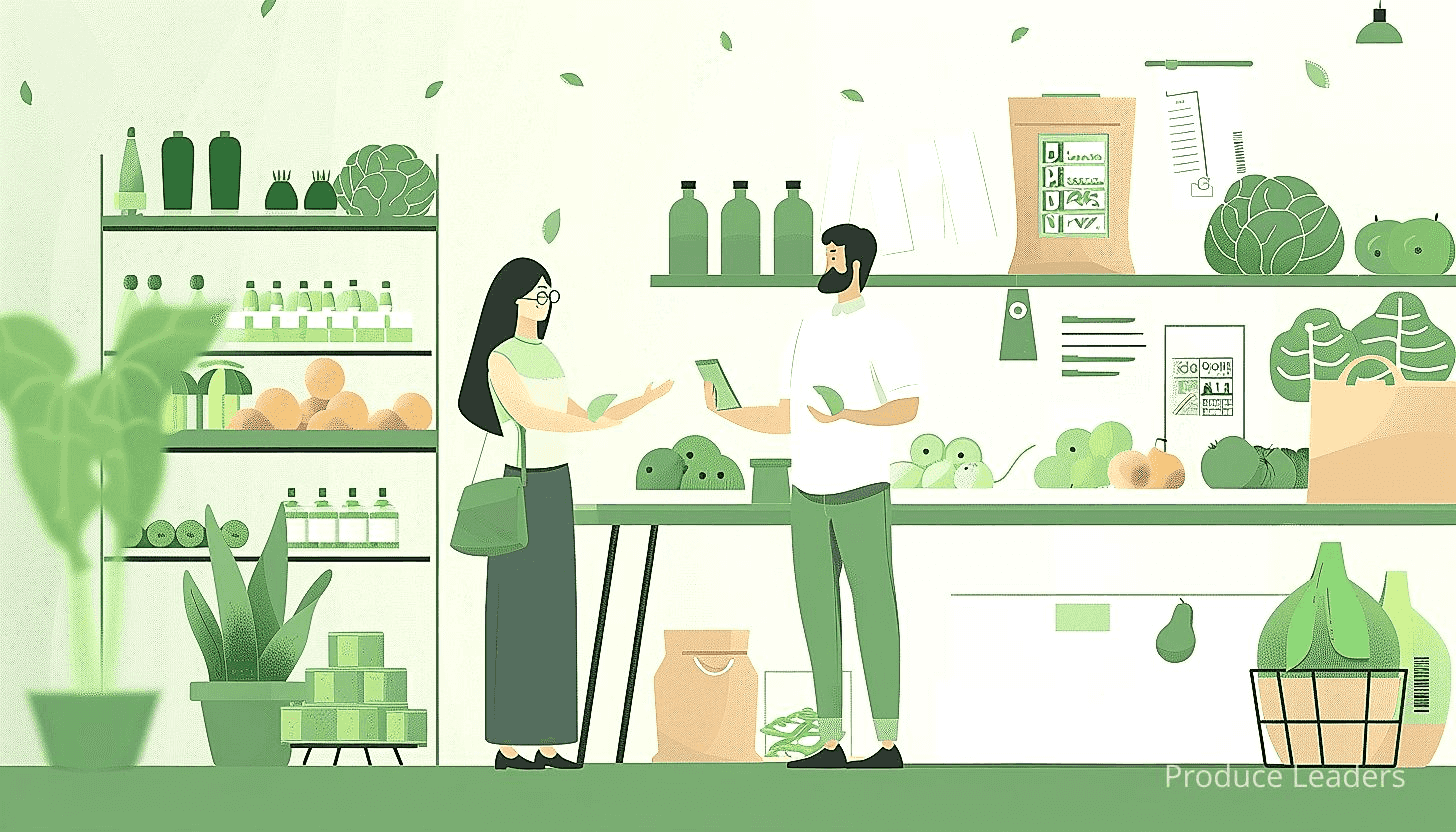
This approach has a significant impact on persuading a potential retail buyer. After all, they’re not simply buying for themselves but for the customers they serve.
Convinced they need to try your product? Presenting the handy list below which outline some impactful benefits of providing product samples:
- Reduced Perceived Risk: Samples dissipate any doubts or concerns a potential buyer may have about your product.
- Tangible Evidence: A sample gives buyers real proof of the consistency and quality of your produce.
- Triggers Reciprocity: When you offer something for free – like a sample – it naturally encourages a sense of obligation to give something back, like a purchase order.
Retail buyers are always on the lookout for fresh, high-quality produce. They’re seeking suppliers who are reliable and trustworthy. Nothing proves these qualities better than a physical sample of your product.
Offering samples can also open up a dialogue between you and the retail buyer. It demonstrates your confidence in your product. It helps initiate a business relationship grounded in trust and good faith.
What’s more, it also gives you the chance to showcase your sustainable farming practices or innovative packaging solutions, for instance. Isn’t this a great opportunity to highlight what sets your produce apart from the competition?
Pro Tip: Offering product samples not only provides tangible proof of your product’s quality, but it also initiates a trustworthy business relationship with your retail buyers, so consider it as a powerful business tool in your negotiations.
Moreover, it’s also worth noting that samples can be useful for logistical reasons. Sending a sample can clarify handling instructions or storage requirements for your fresh produce.
Overall, by offering a product sample, you’re not just showcasing your produce. You’re also putting forward your business’s reputation, values, and reliability. It’s a powerful business tool, rightly used, can play a significant role in negotiating successful deals with retail buyers.
Importance of Professionally Prepared Documents
In Short: Professionally prepared documents are essential in the fresh produce industry as they build trust with retail buyers through clear, concise, and accurate details about the produce and business practices. Regular updates to these documents not only showcase a supplier’s commitment to quality but also foster accountability and adaptability amid market competition.
When dealing with retail buyers for your fresh produce, having professionally prepared documents is not a matter of choice but necessity. Documentation presents a clear, comprehensive, and objective narrative about your produce’s quality, value, and sourcing.
Consider this, what makes you trust a product or brand, especially in the food industry? Is it not the transparent and accessible information about the product, its sourcing, certification, and commitment to quality?
The same logic applies to retail buyers. They are constantly sifting through potential suppliers, and your professionally prepared documents serve as your tickets to their trust and business. Let me tell you, what are the elements that contribute to making documents ‘professionally prepared’?
Let’s dig in into this a bit.
- Well-structured and organized presentation always gives off the impression of a serious, detail-oriented business.
- Clear and concise language conveying your capability as a reliable supplier will put a retail buyer’s mind at ease.
- Accurate and detailed information not only about your produce but also your delivery pipeline and storage practices gives you an edge.
- Transparent information about sourcing and farming practices shows that you’re invested in responsible and ethical agriculture.
Keeping your documents professionally prepared means you hold your product and your business in the highest regard and are committed to maintaining and delivering quality. It shows that your business is not just about selling fresh produce – it’s also about maintaining an upstanding reputation in the industry.
But wait, are professionally prepared documents a one-time task? The answer is a resounding no. Continual updates and reviews of your documents with the current details of your operation are crucial. After all, are you not continually improving and evolving your business?
It also provides an excellent opportunity to keep your retail buyers engaged with your brand, especially with the evolving expectations of consumers who now demand transparency and quality assurance. Regular updates not only keep your retail buyers informed but also consolidate your credibility in their eyes.
These updates are more than just corrections; they are statments saying “I’m on top of my game“. Keeping on top of your documentation shows that you’re not only accountable but also adaptable, which can set you apart from competitors.
Important: Having professionally prepared documents is a necessity, not a choice, when dealing with retail buyers for your fresh produce, as it presents a clear, comprehensive, and objective narrative about your product’s quality, value, and sourcing, laying the groundwork for trust.
To summarise, professionally prepared documents confirm your commitment to quality and transparency. It lays the groundwork for the trust that you hope to build with your retailers. And, isn’t trust the cornerstone of any prolonged and beneficial business relationship?
In this world of cut-throat competition, every retail buyer is on the lookout for suppliers who not only deliver quality products but can also be relied upon in the long run. Make your professionally prepared documents your badge of reliability and watch your business do wonders.
Navigating Negotiations in Produce Sales
In Short: Successful produce sales to retail buyers rely on a deep understanding of the retail landscape, strong negotiation skills, and solid buyer relationships. Essential tactics include knowing your product, being flexible, aiming for expedited payment terms, harnessing powerful communication, listening to buyer’s needs, maintaining quality, timely delivery, and preserving a professional reputation.
Selling fresh produce directly to retail buyers is certainly an art. It requires a keen understanding of the retail landscape and a robust knack for negotiation.
Having a solid, professional relationship with your buyers is pivotal. Knowing your buyer’s business needs and meeting them is half the battle won.
Understanding that price is as significant to a retail buyer as quality, isn’t it important to put some thought into this critical aspect?
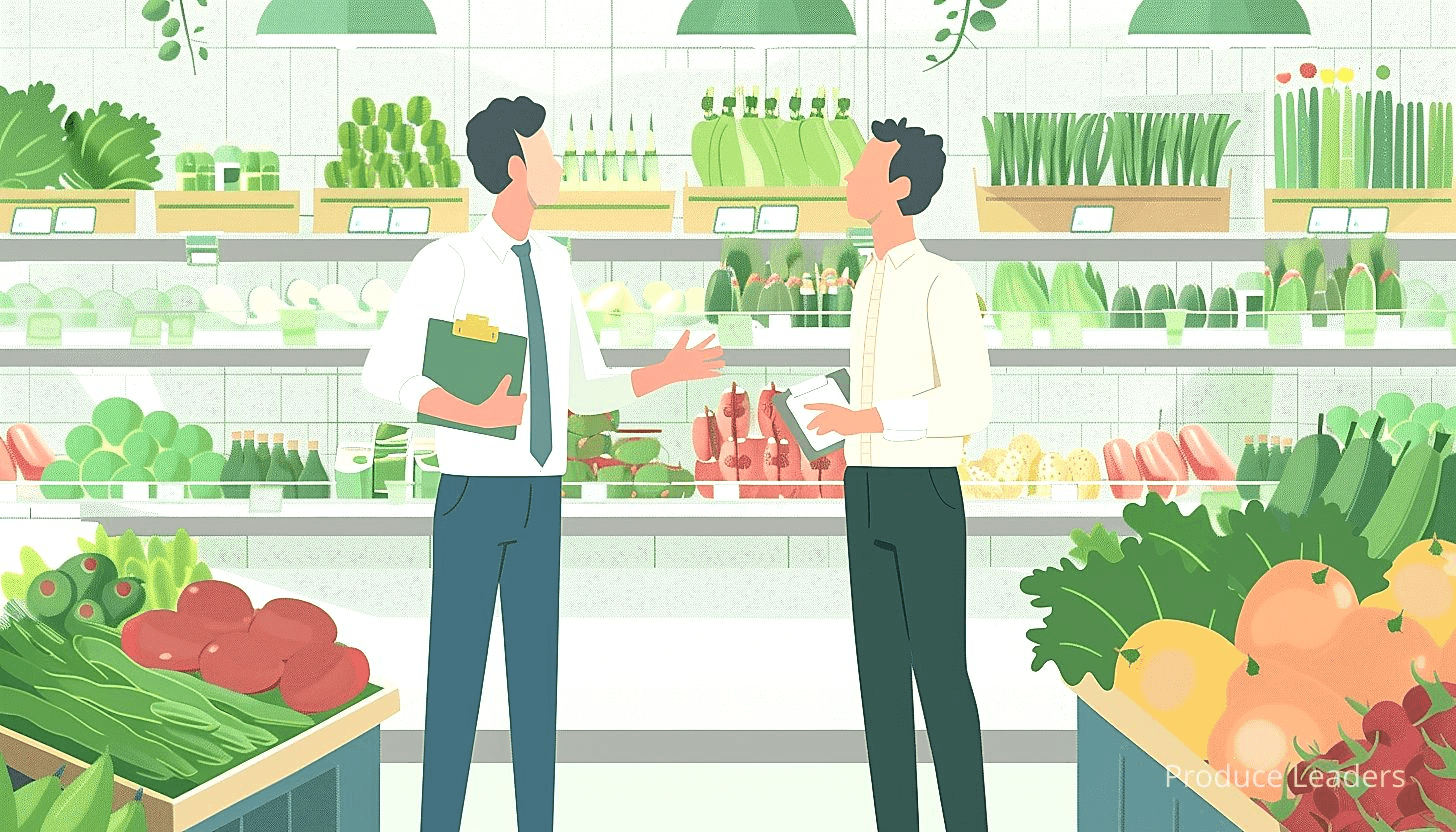
Now, let’s explore a few key points you need to remember while navigating negotiations with retail buyers:
- Know your product: Thorough knowledge about your product’s cost, benefits and competitive landscape is essential. No substitute for this, is there?
- Flexibility: Be prepared to negotiate package size, delivery schedules and discounts for bulk orders.
- Payment terms: Aim for expedited payments but be prepared for some negotiation.
Shouldn’t we underline the fact that communication is your most powerful tool during negotiations?
Crystal-clear delivery of your product’s USPs and your terms and conditions often swings the deal in your favor. Add a dash of persuasion, and you’re on the right track!
Having said that, is it not equally important to listen to the retail buyer’s needs, expectations and concerns?
Acting upon this information and providing relevant solutions elevates your reputation. After all, isn’t negotiation more about finding a balance rather than trying to win?
Besides, remaining professional and courteous, irrespective of the outcome of the negotiation is paramount. Don’t forget, the retail world is small and reputation matters!
Retail buyers prefer dealing with suppliers who provide consistent quality and deliver as promised.
Pro Tip: In negotiating produce sales, maintaining consistent product quality, being flexible, delivering value, and understanding your buyer’s business needs and expectations are key factors in forming strong, professional relationships.
Let me tell you, maintaining product quality and timely delivery is important. A lapse in either of these areas can easily strain the buyer-seller relationship, don’t you think?
In the end, it is always about cultivating trust and delivering value. And the first step towards that lies in mastering the art of negotiation. Are you ready to dive in?
Maintaining Bottom-Line During Negotiations
In Short: To secure a profitable deal with retail buyers for your fresh produce, you need a clear negotiating strategy that focuses on understanding production costs, market dynamics, and maintaining your bottom-line. Other considerations include price transparency, maintaining product quality, fostering positive relationships with buyers, offering flexible deliveries, and effective communication to articulate the value of your produce.
When it comes to approaching retail buyers for your fresh produce, it is crucial to have a clear negotiating strategy. This strategy is intended to ensure a profitable deal without sacrificing the quality of your produce or relationships with your buyers.
Your priority should be maintaining your bottom-line, the minimum acceptable level of sales or revenues. But how can you achieve that while negotiating?
The first step is to have a deep understanding of your production costs. This means knowing in detail not only direct expenses such as fertilizers or seeds but also indirect costs like labor or energy.
You need to tie these costs with the price you aim to sell your produce for. Understanding your break-even point will give you a minimum price you can negotiate.
Knowing your cost structure will also allow you to identify areas in which you can save, enabling you to offer competitive pricing without affecting your bottom-line.
The next key aspect to consider is the market dynamics.
Whether it’s a buyers’ or sellers’ market significantly impacts your leverage during negotiations. In a buyers’ market, when supply exceeds demand, buyers often have the upper hand. Conversely, in a sellers’ market, where demand exceeds supply, sellers may be in a stronger position. Understanding the market will inform the level of flexibility you can afford during negotiations.
Now let’s take a look at other factors to consider:
- Price Transparency: Communicate your pricing structure and the reasons behind it to your buyers.
- Quality Assurance: Ensure that the quality of the produce meets or exceeds buyers’ expectations.
- Customer Affinity: Create a positive relationship with your buyers. Engage them in shared values or sustainable practices.
- Flexibility in Delivery: Be adaptive to buyer demands when possible. Flexible delivery schedules can provide a competitive edge.
It’s important to not solely focus on pricing strategies, but to take a holistic approach while negotiating. After all, negotiations are about more than just the price.
It’s important to remember, communication is critical. You need to consistently articulate the value of your fresh produce. This helps establish long-term relationships with your buyers, and can lead to better negotiations and more profitable partnerships.
Armed with this knowledge, successfully negotiating with retail buyers can effectively secure your bottom-line. I want you to remember, the key to successful negotiations is understanding not only what you can offer, but also what your buyers need, value and are willing to negotiate for.
Following Up after Presentations: Why?
In Short: Post-presentation follow-ups are crucial in business as they demonstrate value and attention toward retail buyers, acting as a key tool to reaffirm presented products’ selling points. An effective follow-up should be punctual, personalized, add value, be clear and provide a call to action, all aimed at building a successful and symbiotic business relationship with the retail buyer.
We have all heard the saying, “Action speaks louder than words“.
In the business world, however, communication also carries significant weight.
Do you ever wonder why some businesses excel in maintaining strong relationships with their retail buyers?
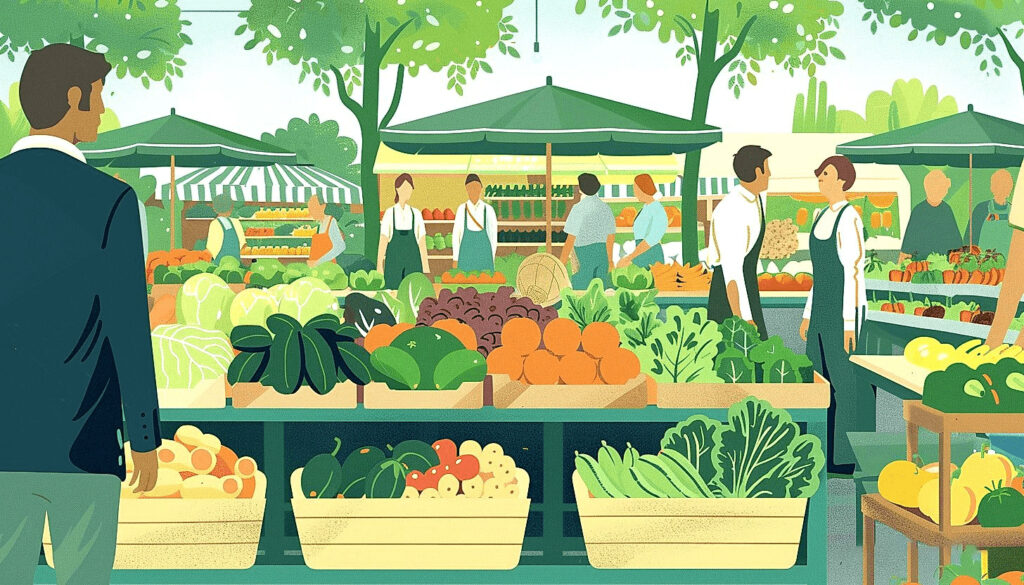
Well, one key contributing factor is their robust follow-up strategies post-presentation.
So why is this post-presentation follow-up so crucial, and what makes it worth the effort?
Understanding this concept requires appreciating the human aspect in business dealings.
Don’t we all desire being valued and heard?
Buyers are no different. A follow-up correspondence goes a long way in showing that you value their time and that you listen actively.
Acknowledging their concerns and aligning with their business goals bolsters your stake in the business relationship.
It extends beyond just a polite after-note, becoming a potent tool to reiterate the key selling points of your fresh produce.
Moreover, let’s not forget the real world’s reality.
Buyers juggle with numerous pitches and presentations in a single day.
Ensuring that your presentation doesn’t get lost in this sea of information is a mission you cannot afford to forget.
How do you approach this crucial aspect?
Worry not! Here are some valuable points you’ll need to consider in your follow-up.
- Punctual follow-up: Time is of essence in business. Act promptly and follow-up within a suitable timeframe.
- Personalized touch: Personalize your follow-up correspondence to reflect the buyer’s unique needs and concerns.
- Value addition: Always ensure the follow-up adds value to the buyer’s knowledge about your fresh produce.
- Clarity: Make sure your follow-up message is clear, concise and devoid of any ambiguity.
- Call to action: Plant a clear call to action in your follow-up, thus making it easier for the buyer to engage with you.
Does it stop there?
No.
Following up successfully also means lining up your next steps.
Perhaps you’re planning a site visit, or sharing product samples or even scheduling a product tasting.
Whatever your next step may be, ensure it aligns with your buyer’s expectations.
I want you to remember, the end goal is to build a robust, successful, and symbiotic business relationship with your retail buyer.
Following up after presentations is not simply a check-box exercise, is it?
It’s a strategic process, an art, that when executed skillfully can enhance your business relations and fuel your fresh produce sales.
Importance of Feedback in Sales Success
In Short: Client feedback is a vital driver of successful sales, helping to improve product quality, influence purchasing decisions, build buyer trust, and identify market trends. Utilizing this feedback for actionable insights enables business growth, enhances customer satisfaction, and builds lasting relationships.
Having a quality product is no doubt a crucial aspect of any business. However, it’s not the sole determinant of success.
Another significant element that often goes unnoticed is client feedback.
Feedback can transform the way you do business, don’t you agree? More often than not, it’s a important driver of sales success.
Understanding customer needs and expectations undoubtedly contribute to creating highly desirable produce. Can you imagine a success story without satisfied customers?
Feedback plays a key role in this scenario.
Not only does feedback provide insight into what’s working well, but it also spotlights the areas that demand improvement. Imagine harnessing this knowledge to make your product more appealing.
Doesn’t that place you on a sure path to greater sales success?
Still skeptical about it? Let’s look more deeply into the impact of feedback on your sales success and how it can shape your approach to retail buyers. Consider the following points:
- Improves your product quality: When buyers voice their experience with your produce, you can discern areas that need improvement. This feedback loop promotes a culture of continuous improvement in your business.
- Influences purchasing decisions: Excellent reviews can attract new customers while negative ones highlight areas of improvement. Can you see how this contributes directly to your sales?
- Builds buyer’s trust: When you act on the feedback provided, it demonstrates that you value your buyers’ opinion. Wouldn’t this create a trusting relationship?
- Identifies market trends: Feedback can identify the latest trends and tastes in the market. Imagine adapting swiftly to market changes and meeting the customer’s needs proactively due to feedback.
Receiving feedback, especially constructive criticism, may sting a bit. However, it’s a necessary part of growth.
I want you to remember, the goal isn’t to make everyone happy. Could we say that the objective is to better understand how your product is perceived in the market, and how you can form a competitive edge?
After all, could you procure strategic changes without understanding your current impact?
Taking feedback from retail buyers and converting it into actionable insights is crucial for business growth. Aside from boosting sales, don’t you agree that it’s also about enhancing customer satisfaction and building lasting relationships with them?
The interaction doesn’t end once the produce is sold and feedback received. Let’s take it a leap further, yes? Implement the feedback, measure the effectiveness of these adjustments, and then ask for more feedback.
Isn’t that what we call the feedback loop?
Important: Feedback, particularly client feedback, is a vital driver of sales success, providing insight into what’s working well and spotlighting areas for improvement to ensure product appeal and business growth.
Now then, the importance of feedback in sales success is crystal clear, isn’t it? In your entrepreneurial journey towards sales success, don’t forget the immense potential that lies in the voice of your buyers. Makes sense, right?
As you approach retail buyers for your fresh produce, remember, they could be your biggest critics, also your biggest fans. And who better to help direct your path to sales success?
The Bottom Line
Understanding and utilizing market research in produce sales allows for strategic approaches in targeting retail buyers.
Adapting your presentations based on client preferences can position your fresh produce more favorably, thereby accelerating sales.
Establishing strong and engaging relationships with retail buyers can lead to potential long-term partnerships that ensure steady revenue flow.
Providing product samples can be an effective strategy in showcasing the quality of your produce and enticing potential buyers.
In attempting to secure a place in the retail market, the necessity of professionally prepared documents cannot be undermined, as they contribute significantly to a company’s credibility.
Mastering the art of negotiation is beneficial in securing profitable deals for your produce sales, while also protecting your business’ interest.
It is crucial to focus on maintaining the bottom-line during negotiations to ensure that sales agreements are economically viable and sustainable.
Following up after presentations not only conveys professionalism but also reiterates your interest in doing business, potentially leading to fruitful collaborations.
And finally, acknowledging the importance of feedback can aid in refining sales approaches, continually driving sales success in fresh produce.
Overall, these combined strategies create a comprehensive approach to effectively engage retail buyers for your fresh produce offerings.



